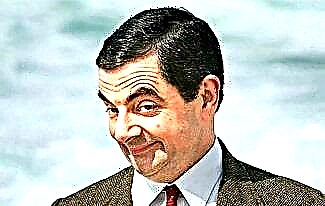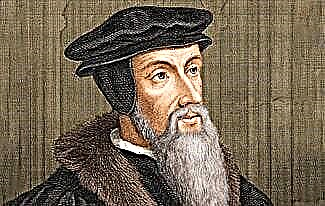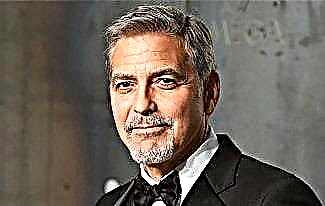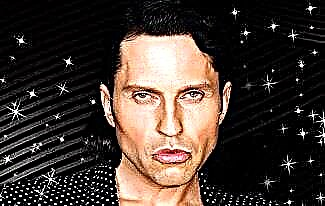Already ancient Greek scientists wondered whether a person created mathematics or whether it exists and directs the development of the Universe by itself, and a person is only able to comprehend mathematics to some extent. Plato and Aristotle believed that humans cannot change or influence mathematics. With the further development of science, the postulate that mathematics is something given to us from above, paradoxically strengthened. Thomas Hobbes in the 18th century directly wrote that geometry as a science was sacrificed to man by God. Nobel laureate Eugene Wigner already in the twentieth century called the mathematical language a "gift", however, God was no longer in vogue, and according to Wigner, we got the gift from fate.

Eugene Wigner was called "the quiet genius"
The contradiction between the development of mathematics as a science and the ever greater strengthening of faith in the nature of our world, predetermined from above, is only apparent. If most of the rest of the sciences learn about the world, basically, empirically - biologists find a new species and describe it, chemists describe or create substances, etc. - then mathematics left experimental knowledge a long time ago. Moreover, it could hinder its development. If Galileo Galilei, Newton or Kepler, instead of making a hypothesis about the motion of planets and satellites, looked through a telescope at night, they would not be able to make any discovery. Only with the help of mathematical calculations did they calculate where to point the telescope, and found confirmation of their hypotheses and calculations. And having received a harmonious, mathematically beautiful theory of the motion of celestial bodies, how was it possible to be convinced of the existence of God, who so successfully and logically arranged the Universe?

Thus, the more scientists learn about the world and describe it by mathematical methods, the more surprising is the correspondence of the mathematical apparatus to the laws of nature. Newton found that the force of gravitational interaction is inversely proportional to the square of the distance between bodies. The concept of "square", that is, the second degree, appeared in mathematics a long time ago, but miraculously came to the description of the new law. Below is an example of an even more surprising application of mathematics to the description of biological processes.
1. Most likely, the idea that the world around us is based on mathematics first came to Archimedes' mind. It's not even about the notorious phrase about the fulcrum and the revolution of the world. Archimedes, of course, could not prove that the universe is based on mathematics (and hardly anyone can). The mathematician managed to feel that everything in nature can be described by the methods of mathematics (here it is, the fulcrum!), And even future mathematical discoveries are already embodied somewhere in nature. The point is only to find these incarnations.

2. The English mathematician Godfrey Hardy was so eager to be a purely armchair scientist living in the high world of mathematical abstractions that in his own book, pathetically titled "The Apology of a Mathematician," he wrote that he had done nothing useful in life. Harmful, of course, too - only pure mathematics. However, when German physician Wilhelm Weinberg investigated the genetic properties of individuals mating in large populations without migration, he proved that the genetic mechanism of animals does not change, using one of Hardy's works. The work was devoted to the properties of natural numbers, and the law was called the Weinberg-Hardy Law. Weinberg's co-author was generally a walking illustration of the "better keep silent" thesis. Before starting work on the proof, the so-called. Goldbach's binary problem or Euler's problem (any even number can be represented as the sum of two primes) Hardy said: any fool will guess this. Hardy died in 1947; proof of the thesis has not yet been found.

Despite his eccentricities, Godfrey Hardy was a very powerful mathematician.
3. The famous Galileo Galilei in the literary treatise "Assaying Master" directly wrote that the Universe, like a book, is open to the eyes of anyone, but this book can only be read by those who know the language in which it is written. And it is written in the language of mathematics. By that time, Galileo had managed to discover the moons of Jupiter and calculate their orbits, and proved that the spots on the Sun are located directly on the surface of the star, using one geometric construction. Galileo's persecution by the Catholic Church was caused precisely by his conviction that reading the book of the Universe is an act of knowing the divine mind. Cardinal Bellarmine, who considered the case of a scientist in the Most Holy Congregation, immediately understood the danger of such views. It was because of this danger that Galileo squeezed out the recognition that the center of the universe is the Earth. In more modern terms, it was easier to explain in sermons that Galileo encroached on the Holy Scriptures than to expound the principles of approach to the study of the Universe for a long time.

Galileo at his trial
4. A specialist in mathematical physics Mitch Feigenbaum discovered in 1975 that if you mechanically repeat the calculation of some mathematical functions on a microcalculator, the result of the calculations tends to 4.669 ... Feigenbaum himself could not explain this oddity, but wrote an article about it. After six months of peer review, the article was returned to him, advising him to pay less attention to random coincidences - mathematics after all. And later it turned out that such calculations perfectly describe the behavior of liquid helium when heated from below, water in a pipe turning into a turbulent state (this is when water runs from the tap with air bubbles) and even water dripping due to a loosely closed tap.

What could Mitchell Feigenbaum have discovered if he had an iPhone in his youth?
5. The father of all modern mathematics, with the exception of arithmetic, is Rene Descartes with the coordinate system named after him. Descartes combined algebra with geometry, bringing them to a qualitatively new level. He made mathematics a truly all-encompassing science. The great Euclid defined a point as something that has no value and is indivisible into parts. In Descartes, the point became a function. Now, with the help of functions, we describe all non-linear processes from gasoline consumption to changes in own weight - you just need to find the correct curve. However, Descartes's range of interests was too wide. In addition, the heyday of his activities fell on the time of Galileo, and Descartes, according to his own statement, did not want to publish a single word that contradicted church doctrine. And without that, despite the approval of Cardinal Richelieu, he was cursed by both Catholics and Protestants. Descartes withdrew into the realm of pure philosophy and then died suddenly in Sweden.

Rene Descartes
6. Sometimes it seems that the London physician and antiquarian William Stukeley, considered a friend of Isaac Newton, should have been subjected to some of the procedures from the arsenal of the Holy Inquisition. It was with his light hand that the legend of the Newtonian apple went around the world. Like, I somehow come to my friend Isaac at five-o-clock, we go out into the garden, and there the apples fall. Take Isaac, and think: why do apples only fall down? This is how the law of universal gravitation was born in the presence of your humble servant. Complete profanation of scientific research. In fact, Newton in his "Mathematical Principles of Natural Philosophy" wrote directly that he mathematically derived the forces of gravity from celestial phenomena. The scale of Newton's discovery is now very difficult to imagine. After all, now we know that all the wisdom of the world fits into the phone, and there will still be room. But let us put ourselves in the shoes of a man of the 17th century, who was able to describe the movement of almost invisible celestial bodies and the interaction of objects using fairly simple mathematical means. Express divine will in numbers. The fires of the Inquisition were no longer burning by that time, but before humanism there were at least another 100 years. Perhaps Newton himself preferred that for the masses it was a divine illumination in the form of an apple, and did not refute the story - he was a deeply religious person.

The classic plot is Newton and the apple. The scientist's age is indicated correctly - at the time of discovery, Newton was 23 years old
7. One can often come across a quote about God by the outstanding mathematician Pierre-Simon Laplace. When Napoleon asked why God is not mentioned even once in the five volumes of Celestial Mechanics, Laplace replied that he did not need such a hypothesis. Laplace was indeed an unbeliever, but his answer should not be interpreted in a strictly atheistic way. In a polemic with another mathematician, Joseph-Louis Lagrange, Laplace emphasized that a hypothesis explains everything, but does not predict anything. The mathematician honestly asserted: he described the existing state of affairs, but how it developed and where it was heading, he could not predict. And Laplace saw the task of science precisely in this.

Pierre-Simon Laplace









